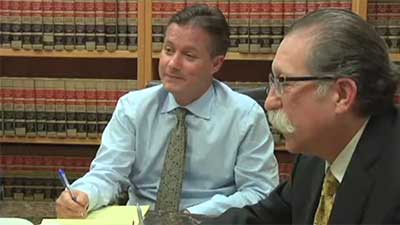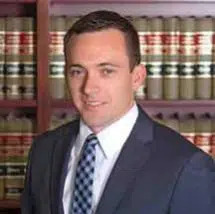Falling Trees and Injuries In New York City
I think that I shall never see A poem lovely as a tree.
A tree whose hungry mouth is prest Against the sweet earth’s flowing breast;
A tree that looks at God all day, and lifts her leafy arms to pray;
A tree that may in summer wear A nest of robins in her hair;
Upon whose bosom snow has lain; Who intimately lives with rain.
Poems are made by fools like me, but only God can make a tree.
Joyce Kilmer
Everyone loves trees, however, when a tree is over-mature or diseased there is a real danger that the tree, or a branch of the tree, will fall and strike a person on a city street or country road lined with trees. Unfortunately, these occurrences are not that infrequent.
In a case entitled, Harris v. East Hills, 41 N.Y.2d 446, 393 N.Y.S.2d 691 (1977), the highest court in New York, the New York Court of Appeals, made it clear that a village has a statutory duty to maintain and inspect trees on village properties which border country roads. In addition, the County has a duty to maintain its roads in a reasonably safe condition and this duty extends to trees which overhang roads.
If a village fails to conduct any tree inspections whatsoever, under the theory of “hear no evil, see no evil,” and takes the ostrich approach, so that it has no program of tree inspections, the village can be held liable. As the court found in Harris, the longstanding condition of the tree and the failure of the village to conduct any inspections whatsoever permitted the jury to find that the village had been negligent.
In the Harris case a tree limb fell along a street on Long Island, striking the roof of the plaintiff’s car, causing plaintiff to be seriously injured. In that case the tree was on a village-owned property overhanging a country road.
In Hillier v. Town of Greenburgh, 301 A.D.2d 572, 754 N.Y.S.2d 29 (2d Dept. 2003), decided some twenty-five years after Harris, the Appellate Division Second Department found that since the Town had no program to inspect trees and an inspection would have revealed that the tree could fall because it was diseased, and its condition had lasted for several years, the Town of Greenburgh could be held liable.
Similarly, in McMahon v. Village of Old Westbury, 35 Misc. 3d (1213(A), 901 N.Y.S.2d 907 (Supreme Court, Nassau County, 2009), a large tree limb came crashing through the windshield of Mr. McMahon’s truck, causing him serious injuries. In that case, despite a court order to preserve the tree, the village destroyed the tree after the accident and the court indicated the village would be appropriately sanctioned.
Older trees are more prone to have falling branches than younger, more virile trees. When trees are decayed or otherwise diseased, they are more prone to fall. Any hole or cavity in a tree should be inspected for decay.
When a branch has fallen and caused serious injuries, it is important for the injured person or the family and attorney to move rapidly, to take pictures of the tree and attempt to preserve the branch(es) which fell. If possible, one should also seek to obtain a court order directing the town, village or county, or whatever entity it is, to preserve the tree and branch(es).
The attorney should also promptly hire an arborist – a professional with a degree in the practice of cultivation, management, and study of individual trees, and generally focuses on the health and safety of trees and forest issues – to establish the condition of the tree, taking proper tests and samples before the tree is cut down or the branch(es) disappear. The injuries that can be caused by a falling tree or limb can be quite serious.
Although as Joyce Kilmer said many years ago there is “no poem lovely as a tree,” that applies only to trees that are not hazardous. At Jaroslawicz & Jaros we were successful in bringing an action for a man that was injured by a tree branch that fell from a New York City Park onto the sidewalk and caused very serious injuries to his legs. We were able to show that the tree and its branches were diseased and should have been cut down before they fell. We showed that it was an accident waiting to happen.


























